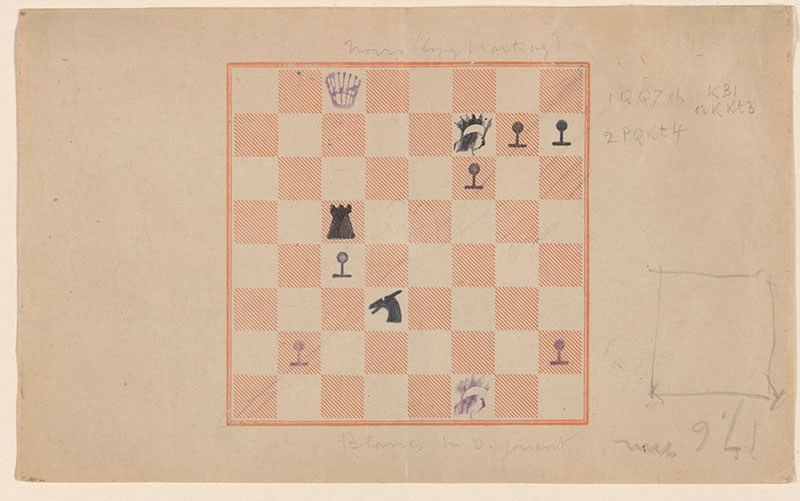
Duchamp's passion for chess led him to become one of the top French chess players of the 1920s and 1930s. He became particularly obsessed with the game when, in 1918-19, he spent nine months in Buenos Aires, where he knew few people and devoted hours to playing chess every day. While in Buenos Aires, he had a set of rubber stamps made in order to record games and play by mail. The present sheet, made with this set, probably comes from a correspondence game from that period. In keeping with his conception of art as a mental activity, Duchamp was attracted to the aesthetic dimension of chess: “Objectively a game of chess looks very much like a pen-and-ink drawing, with the difference, however, that the chess player paints with black and white forms already prepared instead of inventing forms as does the artist.” Both required imagination and inventiveness but, Duchamp noted, “while all artists are not chess players, all chess players are artists.”
Inscribed at upper center in graphite, "noirs (Lopy Martinez)", at upper right, "1 Q Q7ch KB1/ or K Kt3/ 2 P QKt4", at bottom, "Blancs M. D. jouent", at lower right, upside down, "17.6 mm", above a square.
